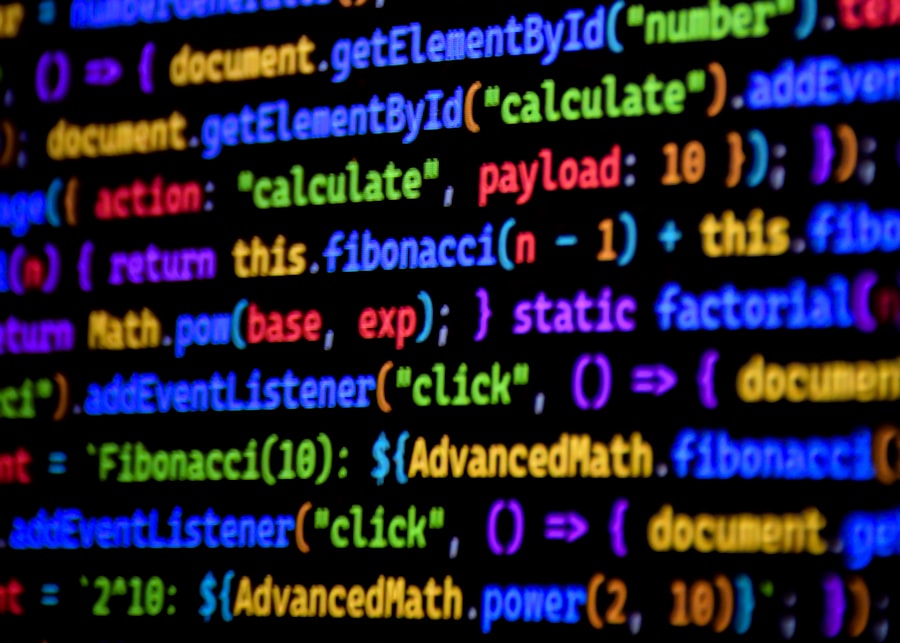The history of cryptology is a fascinating journey that spans thousands of years, beginning with the rudimentary forms of secret writing in ancient civilizations. The earliest known examples of cryptography can be traced back to the Egyptians, who utilized simple hieroglyphs to encode messages. These early forms of cryptology were primarily used for military purposes, allowing leaders to communicate strategies without revealing their plans to enemies.
As societies evolved, so did the complexity of their cryptographic methods. The Greeks, for instance, developed the scytale, a tool that enabled them to send messages by wrapping a strip of parchment around a rod, making the text unreadable unless it was wrapped around a rod of the same diameter. As time progressed, cryptology became more sophisticated.
The Roman Empire introduced the Caesar cipher, a substitution cipher that shifted letters in the alphabet by a fixed number. This method laid the groundwork for future cryptographic techniques and demonstrated the importance of secrecy in governance and warfare. During the Middle Ages, cryptography saw further advancements with the introduction of polyalphabetic ciphers, which used multiple substitution alphabets to enhance security.
The Renaissance period marked a significant turning point as scholars began to study cryptology more rigorously, leading to the development of more complex systems that would eventually culminate in the modern era of cryptography.
Key Takeaways
- Cryptology has a long history, from ancient times to modern day, and has played a crucial role in communication and intelligence gathering.
- The search for extraterrestrial intelligence involves understanding alien communication, which requires a combination of cryptology, linguistics, and technological expertise.
- Cryptology is essential in interstellar communication, as it enables secure and efficient transmission of messages across vast distances in space.
- Deciphering alien languages requires a deep understanding of linguistics and the application of cryptology techniques to unlock the meaning behind alien messages.
- Cracking alien messages presents challenges due to cultural and technological differences, requiring careful consideration of ethical implications and the potential for alien deception.
Understanding Alien Communication: The Search for Extraterrestrial Intelligence
The quest to understand alien communication is one of humanity’s most intriguing endeavors. Scientists and researchers have long speculated about the existence of extraterrestrial intelligence (ETI) and the potential for contact with other civilizations. This search is not merely a whimsical pursuit; it is grounded in scientific inquiry and technological advancement.
The SETI (Search for Extraterrestrial Intelligence) program exemplifies this effort, employing radio telescopes to scan the cosmos for signals that might indicate intelligent life beyond Earth. The fundamental question driving this research is whether other civilizations have developed their own forms of communication and how those systems might differ from human languages. Understanding alien communication involves not only the detection of signals but also the interpretation of their meaning.
Researchers must consider various factors, including the medium through which these signals are transmitted—be it radio waves, light pulses, or other forms of electromagnetic radiation. Additionally, they must grapple with the possibility that alien languages may operate on entirely different principles than human languages, influenced by unique cultural and environmental contexts. This complexity adds layers of difficulty to the already challenging task of deciphering potential messages from extraterrestrial sources.
The Role of Cryptology in Interstellar Communication

Cryptology plays a pivotal role in interstellar communication, particularly in the context of deciphering messages from potential extraterrestrial civilizations. As humanity reaches out into the cosmos, it becomes essential to develop robust methods for encoding and decoding information that may be transmitted across vast distances. The challenges posed by interstellar communication are immense; signals can take years or even centuries to travel between stars, and any message sent may be subject to distortion or interference during its journey.
Moreover, the very nature of alien communication may necessitate entirely new cryptographic approaches. Traditional methods used on Earth may not suffice when dealing with messages from civilizations that could possess vastly different cognitive frameworks and linguistic structures. As researchers explore these possibilities, they must also consider how to encode humanity’s own messages in a way that is comprehensible to potential extraterrestrial recipients.
This dual focus on both sending and receiving messages underscores the importance of cryptology in fostering meaningful interstellar dialogue.
Deciphering Alien Languages: Linguistics and Cryptology
| Chapter | Pages | Key Concepts |
|---|---|---|
| Introduction | 1-10 | Overview of alien languages and cryptology |
| Language Basics | 11-30 | Grammar, syntax, and phonetics of alien languages |
| Cryptology Fundamentals | 31-50 | Encryption, decryption, and code-breaking techniques |
| Alien Communication Patterns | 51-70 | Analysis of alien communication methods and patterns |
The intersection of linguistics and cryptology is crucial when it comes to deciphering alien languages. Linguistics provides insights into how languages are structured and how meaning is conveyed through various elements such as syntax, semantics, and phonetics. When attempting to understand an alien language, researchers must first establish a framework for analysis that accounts for these linguistic principles while also considering the unique characteristics that may arise from an extraterrestrial context.
Cryptology complements this linguistic approach by offering tools and techniques for encoding and decoding messages. For instance, researchers might employ statistical analysis to identify patterns within an alien language’s structure, much like how they would analyze human languages.
By combining linguistic theory with cryptographic methods, scientists can develop a more comprehensive understanding of how to approach the challenge of deciphering potential alien languages.
The Challenges of Cracking Alien Messages: Cultural and Technological Differences
One of the most significant challenges in cracking alien messages lies in the cultural and technological differences that may exist between humanity and extraterrestrial civilizations. Culture shapes language and communication styles; thus, an alien civilization’s worldview could be vastly different from our own. This divergence raises questions about how concepts are expressed and understood across species.
For example, an alien society might prioritize collective experiences over individual narratives, leading to entirely different modes of expression that could confound human interpreters. Technological disparities also pose formidable obstacles in understanding alien messages. An advanced civilization may utilize forms of communication that are beyond human comprehension or rely on technologies that do not exist on Earth.
For instance, they might employ quantum communication methods or utilize biological signals that humans cannot perceive. These differences necessitate a flexible approach to deciphering messages, one that allows for the possibility that alien communication could defy conventional expectations.
The Tools of the Trade: Cryptographic Techniques for Alien Messages

To tackle the complexities of alien communication, researchers must employ a variety of cryptographic techniques tailored specifically for this purpose. One such technique is pattern recognition, which involves identifying recurring sequences or structures within received signals. By analyzing these patterns, scientists can begin to form hypotheses about the underlying rules governing an alien language or communication system.
Another valuable tool is machine learning algorithms, which can process vast amounts of data and identify correlations that may not be immediately apparent to human analysts. These algorithms can be trained on known languages and cryptographic systems to develop models that predict how an alien language might function. Additionally, researchers can utilize simulation software to model potential communication scenarios, allowing them to test various hypotheses about how messages might be encoded or decoded.
Cryptology and the Search for Patterns in Alien Communication
The search for patterns in alien communication is a fundamental aspect of cryptology’s role in understanding extraterrestrial messages. Patterns can provide critical insights into the structure and meaning of a language, serving as a foundation for further analysis. Researchers often begin by examining received signals for regularities—such as repeated sequences or variations in frequency—that could indicate a systematic approach to communication.
In addition to identifying patterns within individual messages, researchers must also consider broader trends across multiple signals. This holistic approach allows them to discern whether certain patterns are consistent across different transmissions or if they vary significantly based on context or intent.
The Ethics of Decrypting Alien Messages: Implications for Intergalactic Relations
The ethical implications surrounding the decryption of alien messages are profound and multifaceted. As humanity ventures into the realm of interstellar communication, it becomes essential to consider the potential consequences of interpreting and responding to messages from extraterrestrial civilizations. One primary concern is the question of consent; if an alien civilization sends a message, do they expect a response?
Or are they merely broadcasting information without any intention of interaction? These questions raise ethical dilemmas about how humanity should approach such communications. Furthermore, there are implications for intergalactic relations that must be carefully navigated.
Misinterpretations or hasty responses could lead to misunderstandings or even conflict with extraterrestrial civilizations. As such, it is crucial for researchers and policymakers to engage in thoughtful discussions about how best to handle potential communications from beyond Earth. Establishing protocols for responding to alien messages could help ensure that humanity approaches these interactions with respect and caution.
The Future of Cryptology: Advancements in Alien Message Decryption
The future of cryptology holds exciting possibilities as advancements in technology continue to reshape our understanding of communication—both terrestrial and extraterrestrial. As computational power increases and algorithms become more sophisticated, researchers will be better equipped to analyze complex signals from space. Quantum computing, in particular, has the potential to revolutionize cryptographic techniques by enabling faster processing speeds and more secure methods for encoding information.
Moreover, interdisciplinary collaboration will play a vital role in advancing cryptology’s capabilities in deciphering alien messages. By bringing together experts from fields such as linguistics, computer science, astrophysics, and anthropology, researchers can develop comprehensive strategies for tackling the challenges posed by interstellar communication. This collaborative approach will foster innovation and creativity as scientists work together to unlock the mysteries of potential extraterrestrial languages.
Cryptology and the Possibility of Alien Deception: Safeguarding Earth from Misinformation
As humanity delves deeper into the realm of interstellar communication, concerns about alien deception become increasingly relevant. Just as humans have employed misinformation tactics throughout history, it is conceivable that extraterrestrial civilizations might engage in similar practices. This raises critical questions about how humanity can safeguard itself against potential manipulation or false information from alien sources.
To address these concerns, researchers must develop robust frameworks for verifying the authenticity of received messages. This could involve cross-referencing signals with established patterns or employing advanced algorithms designed to detect anomalies indicative of deception. Additionally, fostering a culture of skepticism within scientific communities will be essential in ensuring that researchers approach potential communications with caution and critical thinking.
The Intersection of Science Fiction and Reality: Cryptology in Popular Culture and Alien Contact Scenarios
The intersection of science fiction and reality has long captivated audiences’ imaginations when it comes to cryptology and alien contact scenarios. Popular culture has portrayed various interpretations of how humanity might communicate with extraterrestrial civilizations—ranging from optimistic portrayals of peaceful exchanges to cautionary tales about misunderstanding or conflict. These narratives often reflect societal anxieties about technology and communication while also exploring themes related to identity and connection.
In many science fiction stories, cryptology serves as a central theme that drives plotlines forward—whether through characters deciphering complex codes or navigating intricate diplomatic negotiations with alien species. These fictional explorations not only entertain but also provoke thought about real-world implications surrounding interstellar communication. As humanity continues its quest for understanding beyond Earth, it is essential to recognize how these narratives shape public perception and influence scientific inquiry into the possibilities of contact with extraterrestrial intelligence.
In conclusion, the journey through cryptology’s history reveals its profound significance in understanding both human communication and potential interactions with extraterrestrial civilizations. As researchers continue their quest to decode alien messages, they must navigate complex linguistic structures, cultural differences, ethical considerations, and technological advancements—all while remaining vigilant against deception. The future holds promise as interdisciplinary collaboration fosters innovation in this field, paving the way for deeper insights into one of humanity’s most profound questions: Are we alone in the universe?
In the fascinating realm of cryptology and the search for extraterrestrial intelligence, researchers have long been intrigued by the possibility of deciphering alien messages. A related article that delves into this intriguing topic can be found on XFileFindings, where experts discuss the challenges and methodologies involved in interpreting potential communications from other worlds. This article explores the intersection of cryptology and astrobiology, offering insights into how we might one day decode messages from beyond our planet. For more information, you can read the full article by visiting XFileFindings.
🤯WATCH THIS! The Lost Tape: CIA Psychic Predicted Alien’s Voice
FAQs
What is cryptology?
Cryptology is the study of techniques for secure communication and the practice of encoding and decoding messages to keep them secure from unauthorized access.
What are some common techniques used in cryptology?
Some common techniques used in cryptology include encryption, which involves converting plaintext into ciphertext using a key, and decryption, which involves converting ciphertext back into plaintext using the same key.
How is cryptology used in the context of alien messages?
Cryptology can be used to analyze and decipher potential alien messages that may be received from outer space. Scientists and researchers use cryptology to try to understand and interpret any signals or messages that may be of extraterrestrial origin.
What is the significance of cryptology in the search for extraterrestrial intelligence (SETI)?
Cryptology plays a significant role in the search for extraterrestrial intelligence (SETI) by helping to analyze and interpret any potential alien messages that may be received. It allows researchers to attempt to understand the content and meaning of any signals or communications from outer space.
What are some challenges in using cryptology to decipher alien messages?
Some challenges in using cryptology to decipher alien messages include the potential for the messages to be in an unknown or highly advanced form of communication, as well as the possibility of encountering completely unfamiliar symbols or language systems. Additionally, the lack of context or cultural references can make interpretation difficult.
